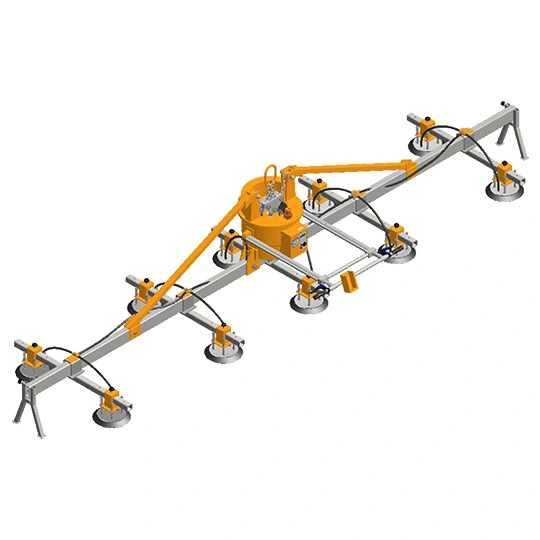Material handling is a critical component of successful construction projects, impacting everything from project timelines and costs to safety and site efficiency. With the evolution of construction technology and logistics, modern material handling is no longer just about moving bricks or steel beams—it’s about integrating advanced equipment, streamlined processes, and safety-driven strategies to deliver projects faster and smarter.

Table of Contents
ToggleUnderstanding Material Handling in Construction
Material handling in construction refers to the movement, storage, control, and protection of materials—such as steel, concrete, stone, piping, prefabricated panels, and consumables—throughout all phases of a project. This covers everything from unloading shipments, distributing materials across the job site, storing components safely, and delivering items to points of use. Effective material handling is vital for reducing labor costs, preventing material waste, improving safety, and maximizing construction productivity.
To learn more about the core concepts, visit What Is Material Handling?
Why Is Material Handling Crucial for Construction Sites?
Construction sites are complex environments with constant movement of people, equipment, and supplies. Delays or errors in material handling can halt production, lead to material loss, increase labor costs, and even cause accidents. Conversely, efficient material handling:
- Reduces downtime and keeps projects on schedule
- Improves worker safety and site organization
- Minimizes handling damage and material waste
- Increases productivity and profitability
Key Functions of Material Handling in Construction
- Receiving and Unloading:
Materials must be received, inspected, and unloaded safely. Equipment like forklifts for construction, wheelbarrows, pallets, carts, and mobile cranes are often involved. - On-site Transportation:
Moving materials from storage areas to specific job site locations is one of the most frequent tasks. Choices range from simple carts to Jib Cranes, Vacuum Lifters, and automated conveyor systems. - Material Storage Solutions:
Proper storage is vital to avoid damage, loss, and clutter. On-site storage includes racks, bins, laydown yards, and covered shelters for weather-sensitive items. Learn more at Material handling Equipment. - Lifting and Positioning:
Placing heavy or awkward materials (like slabs, precast elements, or steel structures) requires specialized lifting equipment for construction, such as slab lifters, hoists, and cranes. - Distribution and Point-of-Use Delivery:
Efficient job site logistics ensure materials are delivered to work areas just in time, reducing double handling and keeping workflows smooth.
Types of Material Handling Equipment for Construction
Manual Handling Tools
- Wheelbarrows, hand trucks, trolleys, and basic lifting aids
- Used for small loads and flexible movement
Motorized and Mechanized Equipment
- Forklifts for construction
- Skid steers, telehandlers, cranes, powered carts
- Hoists and cranes for vertical lifts and heavy components
- Conveyors in construction for efficient material transfer
Automated and Specialized Solutions
- Vacuum Lifters for glass, panels, and non-porous materials
- Aardwolf Slab Lifters for stone, granite, and large slabs
- Material storage racks and automated retrieval systems for high-density storage
To compare different equipment options, see Material-handling Equipment.
Advantages of Efficient Material Handling in Construction
- Reduces Labor Cost in Construction:
Mechanical and automated tools enable fewer workers to handle heavier loads more safely and quickly. - Improves Safety on Construction Site:
Minimizes manual lifting and associated injuries. - Increases Construction Productivity:
Materials are always available at the right place and time, minimizing delays. - Minimizes Material Waste:
Careful storage and handling prevent breakage and loss. - Enhances Project Quality:
Well-organized sites reduce chaos, accidents, and damage to materials.
Common Material Handling Challenges on Construction Sites
- Congested Pathways:
Poor site layout can lead to blocked paths and inefficiency. - Improper Equipment Selection:
Using underpowered or unsuitable equipment increases risk and slows progress. - Inadequate Storage:
Crowded or unprotected storage can damage expensive materials. - Lack of Skilled Operators:
Motorized equipment like cranes and forklifts require trained, certified operators.
Material Handling and Project Logistics
Integrated construction site logistics involve planning the movement and storage of materials as part of the overall project schedule. This includes:
- Pre-project planning for material delivery and laydown areas
- Sequencing deliveries to avoid congestion
- Coordinating equipment and personnel for efficient workflows
Safety & Regulations in Construction Material Handling
Strict safety standards apply to all aspects of material handling. Best practices include:
- Regular inspections and maintenance of all equipment
- Training and certification for all operators
- Clear marking of pedestrian and vehicle paths
- Use of appropriate PPE (personal protective equipment)
- Adherence to national and local safety standards
For detailed compliance information, see Material handling Equipment.
Optimizing Material Handling for Modern Construction
The most successful construction projects integrate modern material handling practices from the outset. Steps include:
- Designing sites with clear material flows
- Selecting the right mix of manual, motorized, and automated equipment
- Investing in advanced tools like Aardwolf Slab Lifters, Vacuum Lifters, and Jib Cranes
- Emphasizing safety and regular operator training
For an in-depth overview, review What Is Material Handling? and What Is Material Handling?.

















Please log in to leave a comment.